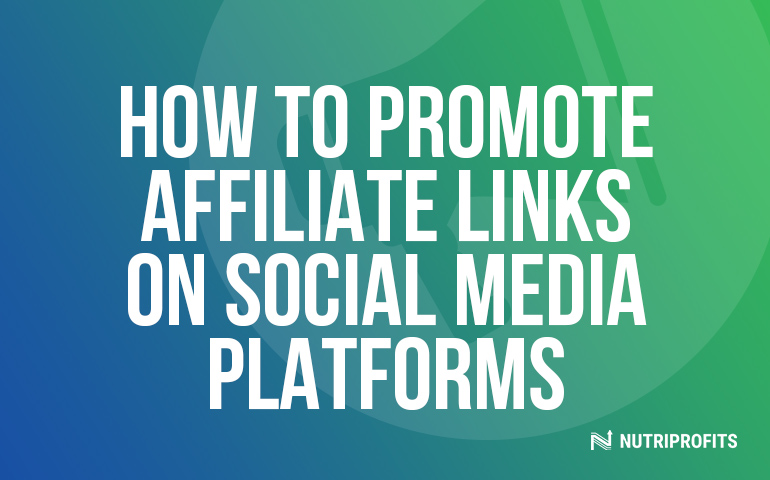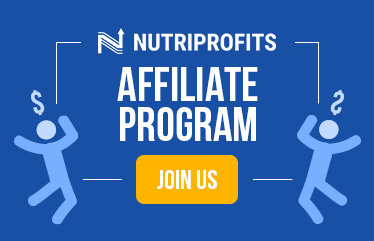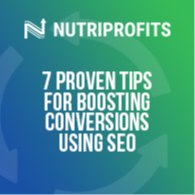Social media is one of the best ways for people to express and promote themselves. People can interact with each other, share posts, upload their own content, follow others, and browse for potential products on social media.
With the benefits social media offers to users, imagine the benefits it brings to affiliate marketers! On many platforms, affiliate marketers can put their affiliate links in their profile biographies or video descriptions.
How would the affiliate marketer promote their affiliate link on social media once it’s out in the open? Placing a link in any post or bio won’t be enough, so what’s the best way to earn repeat consumers?
Social media platforms offer the most opportunity for profit in affiliate marketing. Here’s how to promote affiliate links on social media.
The Best Social Media Platforms for Affiliate Marketing
Affiliate links are uniquely tracked, showing what a marketer gets after joining an affiliate program. The affiliate marketer uses affiliate links to promote products. When a consumer clicks on that link and buys a product, the marketer earns a commission. Affiliate marketers on social media are often referred to as “influencers,” delivering content.
The reason why affiliate links are unique to affiliate marketers is so that the affiliate program will know which person they need to pay for a sale. The affiliate marketer can also use their link to track their clicks, sales, and commissions.
The affiliate marketer can find their link in whatever affiliate program they join. In the program, there’s usually a dashboard for the marketer to grab their link. Sometimes, they’ll have to find it via a specific product sales page. After that, all the marketer needs to do is copy the link and paste it to wherever they want to promote it.
There are many places where affiliate marketers can promote their affiliate links. For example, affiliate marketers can use digital products like eBooks and online courses to promote their links.
They can also use newsletters and emails, though it’s best not to go too crazy with the promotions. Instead, the affiliate marketer should space their promotions out with other informational content related to what they’re promoting. This is often referred to as “creating content.”
Of course, the affiliate offer should apply to what the marketer is promoting and what the consumer is interested in. An affiliate marketer’s website’s landing pages and sales funnels are excellent places for promoting affiliate links for interested consumers.
The affiliate marketer can even promote their affiliate link on streaming sites like Discord and Twitch. However, one the best and most popular place to promote an affiliate link is social media. Some social media platforms are more popular and easier to promote affiliate links than others.
That’s why it’s best for the affiliate marketer to use these social media platforms to promote their affiliate links:
- TikTok
- YouTube
How to Get Started
Now that the affiliate marketer knows what an affiliate link is and the best social media platforms for affiliate marketing, here’s how to promote affiliate links on certain platforms.
Tip One: Promoting on Facebook
At the time of writing, Facebook has over one billion users signed up on its platform, so it’s bound to be a solid place for promoting an affiliate link. So, where should the affiliate marketer start? Facebook allows users to promote affiliate links in their timelines and “about” sections.
To promote their affiliate link on their timeline, the affiliate marketer must first navigate to their Facebook page. Then, they’ll have to scroll to the top of their newsfeed and click the gray text next to their profile picture under “Create Post.” In their post, they can begin constructing how they will deliver quality content.
In the post, the affiliate marketer can enter their affiliate link and a description or image for more context. The post will be product driven, with the affiliate marketer promoting the product associated with the affiliate link. The marketer can see a preview of the destination URL below the text. Then, once they’re satisfied, the affiliate marketer can click “Post”.
To promote their affiliate link in their about section, the affiliate marketer can enter the link under “Contact and Basic Info”. The marketer can also add their other social media profiles and more contact under that same section.
Tip Two: Promoting on Instagram
Owned by Facebook, Instagram lets users share links in multiple places: their bios, stories, direct messages, reels, and posts.
The most popular places to share links are through affiliate marketer’s bios and stories. To promote their affiliate link in their bio, the affiliate marketer must go onto their profile and click “Edit Profile”. Then, they’ll have to add the link to the “Website” field.
It’s quite simple, but Instagram only allows one link in a user’s bio. Affiliate marketers who have more than one link can use websites like LinkTree and Linkinbio for their profile link.
For stories, Instagram used to only allow adding clickable links to those with over 10,000 followers. Now, anyone can add a link via an Instagram link sticker, which is great news for smaller affiliate marketers! So, how can marketers share their links in their stories?
First, the affiliate marketer can either tap the plus sign icon in the upper right corner and select “Story” or swipe right on their screen. Then, they can create their story via photos, videos, or previous content on their phone.
After uploading their content to their story, the affiliate marketer should tap the sticker icon in the top row and tap the link sticker. Then, the marketer can enter their URL and select “Done”. It’s best to include a call-to-action in the story before sending it so that followers will know to click through.
Tip Three: Promoting on TikTok
TikTok has exploded in popularity in recent years, and it’s become one of the most popular apps of all time. That would make it an excellent place for promoting affiliate links. So, how can affiliate marketers do that?
TikTok allows affiliate links for business accounts, but those using business accounts should stick to the app since the desktop version doesn’t have any options for switching accounts.
To promote their affiliate link, the affiliate marketer should click on the three lines at the top right and open “Settings” and “Privacy”. Then, the marketer must select “Manage Account” and choose “Switch to Business Account”.
Affiliate marketers should choose one category for their accounts and add their affiliate links to the “Website” field. Like Instagram, TikTok only allows one link per account, so those with many links should use LinkTree or Linkinbio.
Tip Four: Promoting on Twitter
Though it only allows 280 characters per tweet for users with a free account, Twitter is one of the easiest social media platforms for promoting affiliate links. Affiliate marketers can add their links in their tweets, bios, or direct messages.
Twitter shortens all links in tweets via their t.co service. So, when viewing a tweet on Twitter.com, consumers will see the original link, but they’ll be redirected through a t.co link before arriving at the affiliate marketer’s website.
Twitter shortens links not because of its character limitations, but to protect users from sites spreading malware, phishing attacks, or other harmful activities. Twitter’s link service checks against a list of unsafe sites.
Tip Five: Promoting on YouTube
Since its conception in 2005, YouTube has allowed users to share links in many places, including video descriptions and comments. YouTube allows affiliate marketers to share links to other promotional properties as long as they’re registered in their YouTube accounts.
However, adding too many links can be considered spamming, so it’s best for the affiliate marketer to stick to links on whatever they’re promoting. It’s also a violation to post links in another account’s comment section.
To promote their affiliate link in the video description, all the affiliate marketer needs to do is enter the URL and add some context to the description before uploading a video. The marketer can also add links in one of their own comments as long as they’re related to the video.
Conclusion
Social media is a fantastic way for people to express and promote themselves, and it’s especially true for affiliate marketers. That’s why it’s helpful to learn how to promote affiliate links on social media platforms.





.jpg)

-1-1.jpg)